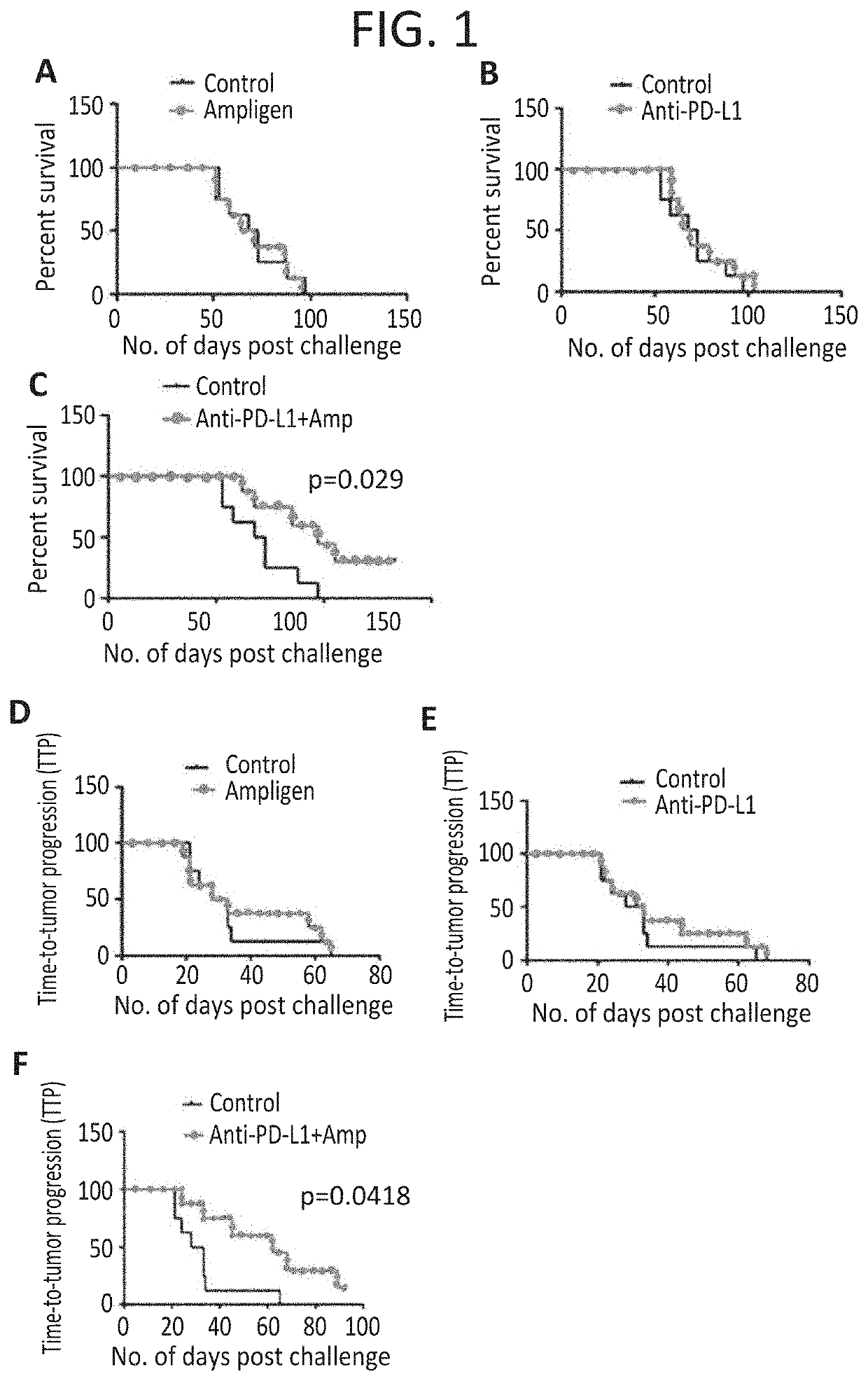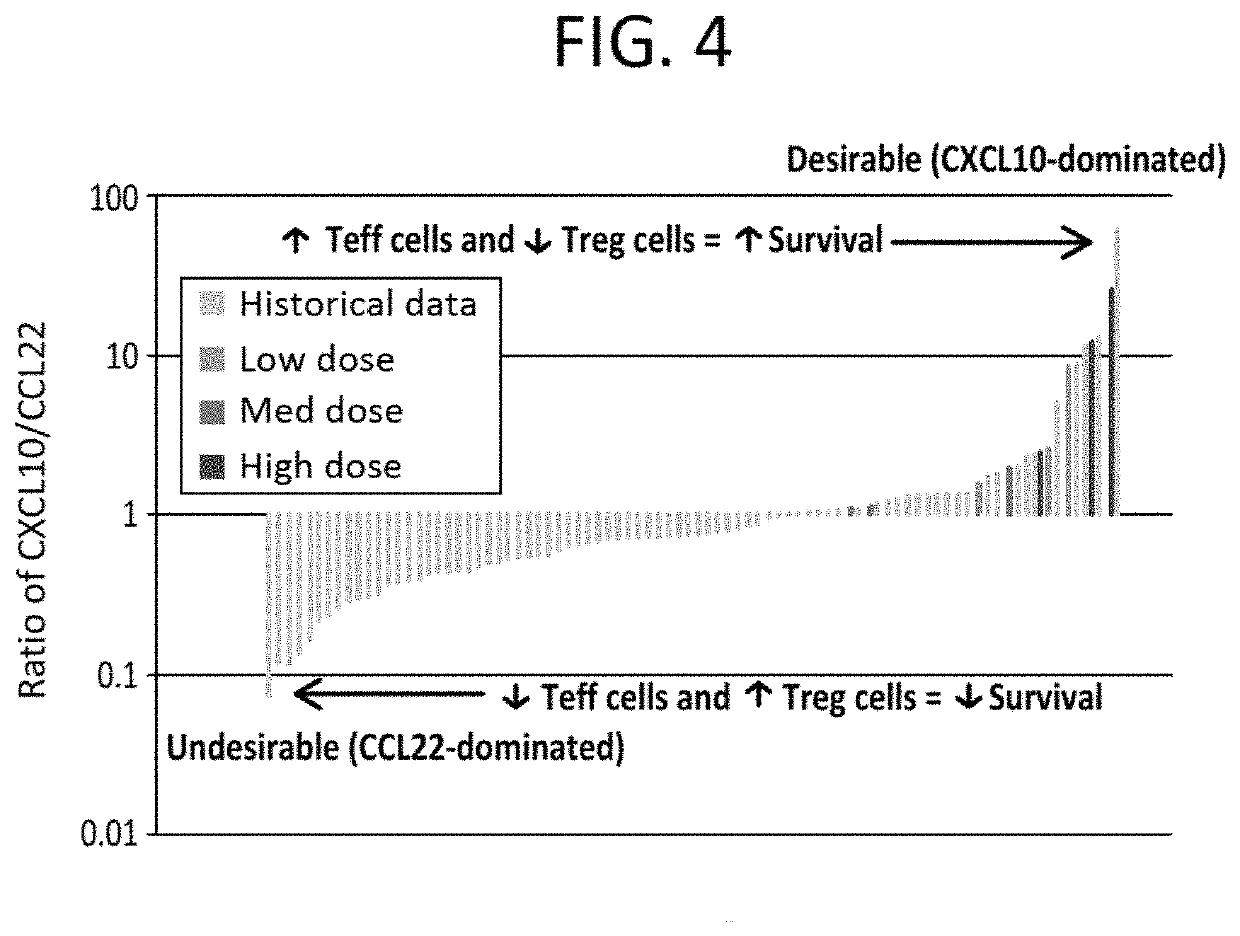Compositions and methods for cancer therapy
a cancer therapy and composition technology, applied in the field of compositions and methods for cancer therapy, can solve the problems of limited success, little or no success, and the rapid growth of the field of immunotherapy for the treatment of cancer, and achieve the effects of increasing tumor regression, increasing tumor survival, and inhibiting tumor growth
- Summary
- Abstract
- Description
- Claims
- Application Information
AI Technical Summary
Benefits of technology
Problems solved by technology
Method used
Image
Examples
example 1
tal Results
[0283]Currently, surgery is the only potentially curative option for pancreatic cancer, but only around 15% of patients are eligible at initial diagnosis since most pancreatic cancers are detected in an advanced stage of the disease. Around 20% of patients are diagnosed with locally advanced pancreatic cancer and the remaining 65% present with metastatic disease.
[0284]The current standard of care (SOC) for locally advanced and metastatic pancreatic carcinoma is FOLFIRINOX, a four-drug cocktail with significant toxicity. Approval of FOLFIRJNOX was based on the Phase 2 / 3 ACCORD study published in 2011 (Von Hoff et al., 2011). In this study, FOLFIRINOX was compared to Gemcitabine, which was the SOC at that time.
[0285]The result of the ACCORD study is that overall survival (OS) increased from 6.8 months with Gemcitabine to 11.1 months with FOLFIRINOX (p<0.001). However, the Complete Response Rate (CR) was only 0.6%. Moreover, overall mean survival with second-line therapy fol...
example 2
c Cancer
[0312]According to the Pancreatic Cancer Action Network, Pancreatic cancer is the fourth leading cause of cancer death in the U.S. It is the only cancer of the most commonly diagnosed with a five-year survival rate at just six percent. Pancreatic cancer is anticipated to move from the fourth to the second leading cause of cancer death in the U.S. by 2020, based on current projections. Accordingly, both the projected number of new pancreatic cancer cases and pancreatic cancer deaths will more than double by 2030 (Matrisian et al., 2012).
[0313]In the European Union, the incidence of pancreatic cancer is continuing to increase, and the death rate is projected to increase by about 30% to about 112,000 new cases per year by 2025. More specifically, while breast cancer deaths are 92,000 and 91,000 in 2010 and 2017 respectively, it is expected to be at 90,000 in 2025. On the other hand, pancreatic cancer deaths are 76,000 and 91,000 in 2010, and 2017 respectively, and it is expecte...
example 3
[0345]Similar to the pancreatic cancer success above showing synergy using AMPLIGEN® plus checkpoint blockage, we also see positive synergistic anti tumor responses in a melanoma animal model.
[0346]Rintatolimod together with anti-PD-L1 antibodies were tested for anti-tumor activity against established subcutaneous B16 melanoma tumors in C57BL / 6 mice. Mice (10 animals per group) were inoculated with 0.4×10E6 B16-F10 tumor cells in their shaved rear flanks. Seven days later (when tumors reached 0.3 to 0.5 cm in their largest diameter), mice were randomized for tumor sizes, and individually tagged and were allocated to the following six treatment groups:
[0347]No treatment (negative controls)
[0348]Rintatolimod alone 100 μg / dose 4×
[0349]Rintatolimod alone 250 μg / dose 4×
[0350]Anti-PD-L1 mAb alone
[0351]Rintatolimod 100 μg / dose 4× plus anti-PD-L1 mAb
[0352]Rintatolimod 250 μg / dose 4× plus anti-PD-L1 mAb
[0353]Rintatolimod was injected intravenously at 100 or 250 micrograms / dose and was repeat...
PUM
| Property | Measurement | Unit |
|---|---|---|
| molecular weight | aaaaa | aaaaa |
| weight percent | aaaaa | aaaaa |
| weight percent | aaaaa | aaaaa |
Abstract
Description
Claims
Application Information
 Login to View More
Login to View More - R&D
- Intellectual Property
- Life Sciences
- Materials
- Tech Scout
- Unparalleled Data Quality
- Higher Quality Content
- 60% Fewer Hallucinations
Browse by: Latest US Patents, China's latest patents, Technical Efficacy Thesaurus, Application Domain, Technology Topic, Popular Technical Reports.
© 2025 PatSnap. All rights reserved.Legal|Privacy policy|Modern Slavery Act Transparency Statement|Sitemap|About US| Contact US: help@patsnap.com



